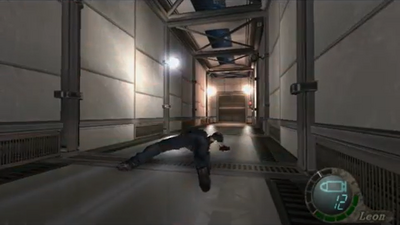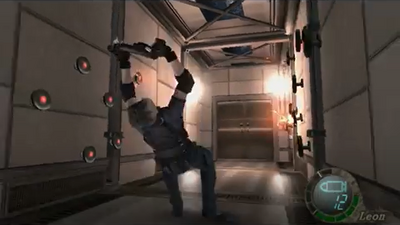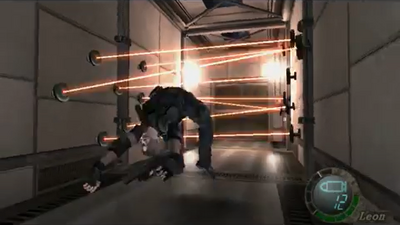The official discord link if you wish to join the discord: https://discord.gg/j5RKwCvAFu
Support the wiki on our official Ko-Fi page or Patreon page!
User:SuperSaiyan2Link/Leon Dodges Lasers: Difference between revisions
m |
|
(No difference)
| |
Latest revision as of 05:01, 7 January 2024
Alright, so. During the later half of Resident Evil 4, Leon S. Kennedy enters a hallway in which he's forced to dodge several lasers before he can make it to the door on the other side. While dodging these lasers on their own is fairly impressive, there is something far more impressive to note. During this challenge, Leon is forced to dodge the activation of the lasers.
Note that he is actually reacting to the activation of the lasers and nothing else, as confirmed in the official strategy guide published by Capcom. Which means as long as I can calculate how fast the lasers are actually emitted, I can see what Leon's reaction timing is. In order to see how fast the lasers are emitted, I just need to determine the width of the room, and the rate that the laser travelled from one end to the other.

Here you see that when Leon is laying down flat on the ground, the width of the room is clearly not that much wider than he. Turn him horizontally here and he can just barely reach from one end to the other, maybe just a foot or two away. Since I didn't actually do precise calculations for this, I'm gonna go with the low-end to be as fair as possible.
Leon is 5'10", so assuming the room is about two feet longer than him in width, it'll be put at 7'10". This means that the hallway is 238.76 cm, or 2.4 meters in width.
Now to calculate the speed in which the laser goes from one end to the other.


It takes literally one frame for the lasers to reach from one end of the room to the other. Since Resident Evil 4 is a game that was made to run in 30 FPS, we know how fast a single frame would be. 30 FPS means that a frame is 1/30th of a second, or 33.33 milliseconds. That means that the laser travels 2.4 meters in 33.33 milliseconds.
2.4 meters per 33.33 milliseconds. But nobody uses meters/millisecond, so I'll have to convert that, which is fairly simple since I just need to do the numerator/denominator shtick. 33.33 milliseconds multiplied by 30.003 is 1 second; Do the same to 2.4 meters, multiply it by 30.003, and you get 72.007 meters.
So it equals 72 meters per second: Subsonic
